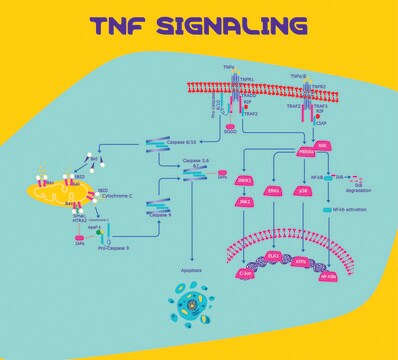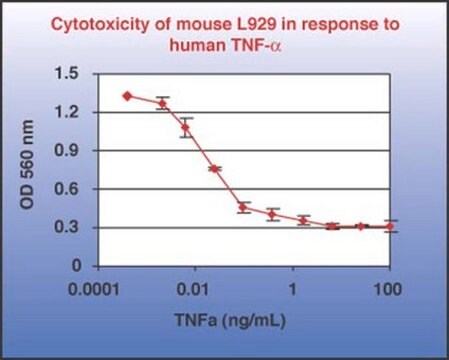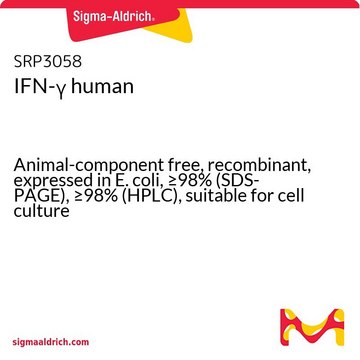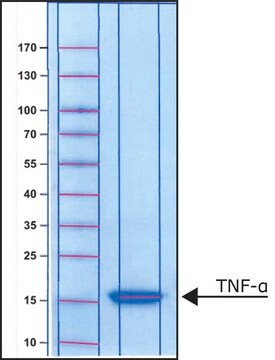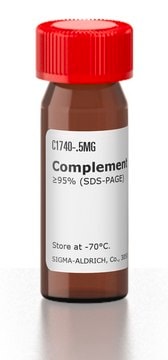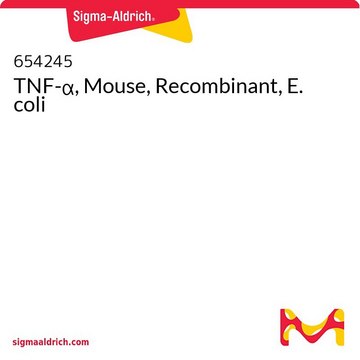T6674
Tumor Necrosis Factor-α human
≥97% (SDS-PAGE), recombinant, expressed in E. coli, powder, suitable for cell culture
Sinónimos:
hTNF-α, TNF-α
About This Item
Productos recomendados
product name
Tumor Necrosis Factor-α human, TNF-α, recombinant, expressed in E. coli, powder, suitable for cell culture
origen biológico
human
Nivel de calidad
recombinante
expressed in E. coli
Análisis
≥97% (SDS-PAGE)
formulario
powder
potencia
0.02-0.3 ng/mL ED50/EC50
calidad
endotoxin tested
mol peso
~17.4 kDa
envase
pkg of 5x10 μg
pkg of 10 μg
condiciones de almacenamiento
avoid repeated freeze/thaw cycles
técnicas
cell culture | mammalian: suitable
impurezas
<1 EU/μg
Nº de acceso UniProt
temp. de almacenamiento
−20°C
Información sobre el gen
human ... TNF(7124)
¿Está buscando productos similares? Visita Guía de comparación de productos
Aplicación
- to analyze the effects of cytokine TNFα-stressed human neuronal and glial (HNG) cells
- to investigate the molecular mechanisms of TNFα-mediated prolyl-4 hydroxylase α1 (P4Hα1) suppression
- to induce death-receptor-mediated apoptosis in HeLa cells.
Acciones bioquímicas o fisiológicas
Forma física
Nota de análisis
Certificados de análisis (COA)
Busque Certificados de análisis (COA) introduciendo el número de lote del producto. Los números de lote se encuentran en la etiqueta del producto después de las palabras «Lot» o «Batch»
¿Ya tiene este producto?
Encuentre la documentación para los productos que ha comprado recientemente en la Biblioteca de documentos.
Los clientes también vieron
Protocolos
WST-1 assay protocol for measuring cell viability, proliferation, activation and cytotoxicity. Instructions for WST-1 reagent preparation and examples of applications. Frequently asked questions and troubleshooting guide for WST-1 assay.
Protocol Guide: XTT Assay for Cell Viability and Proliferation
Nuestro equipo de científicos tiene experiencia en todas las áreas de investigación: Ciencias de la vida, Ciencia de los materiales, Síntesis química, Cromatografía, Analítica y muchas otras.
Póngase en contacto con el Servicio técnico